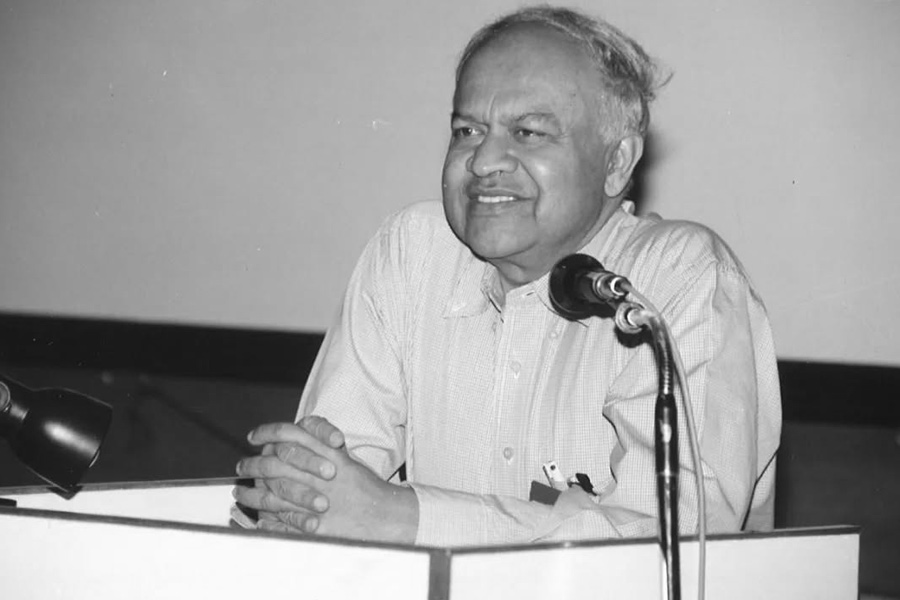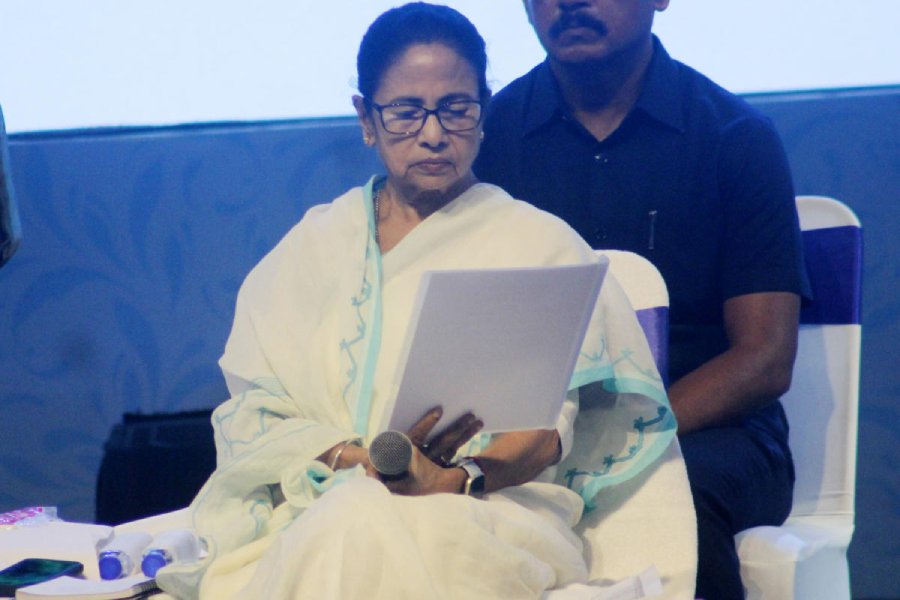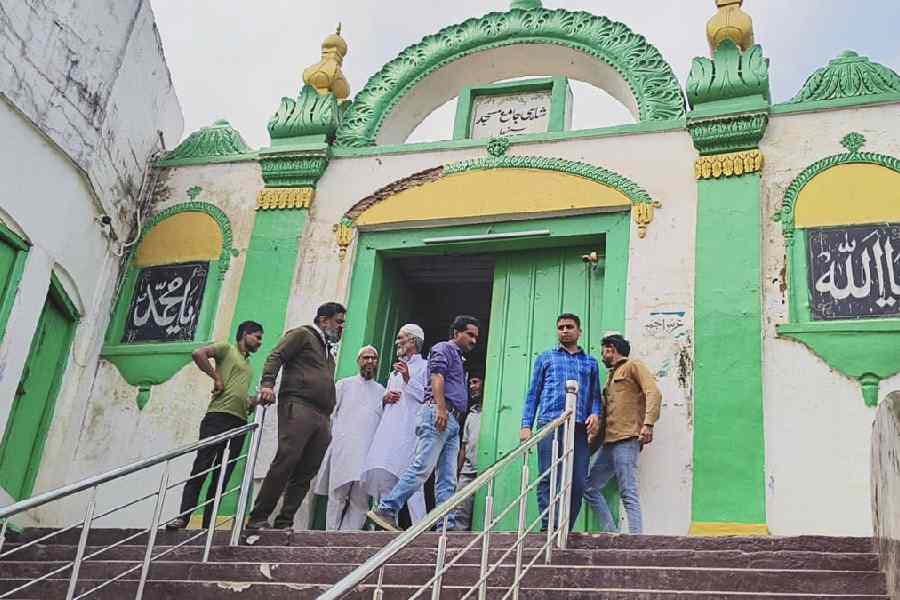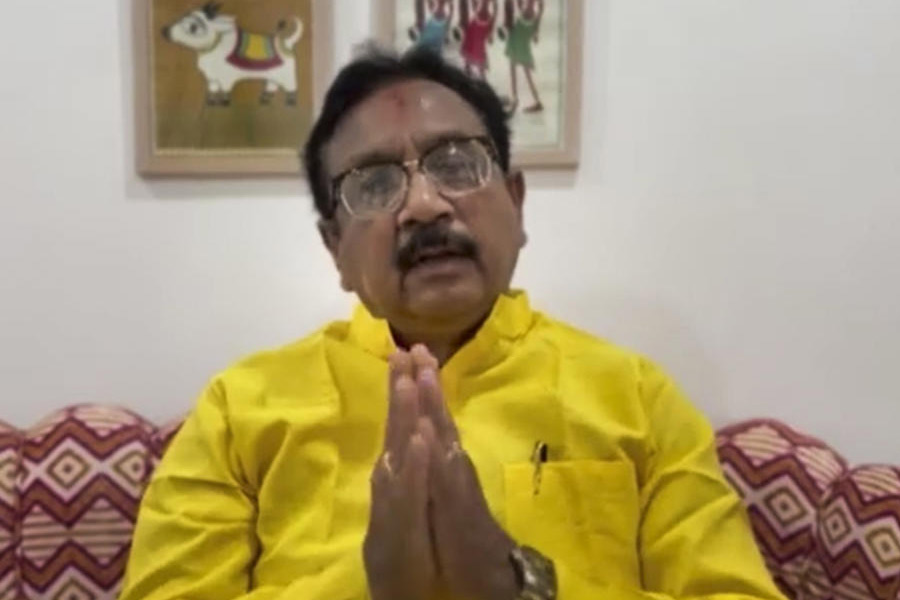 |
| The designer displays a piece from the Naqaashi collection. Picture by Pabitra Das |
Thackeray, Scindia, Abdullah and Roshan are among the surnames she has bedecked with the most intricately crafted jewellery. But Roopa Vohra’s claim to couture fame runs far deeper, with what has become a successful attempt to revive dying Mughal art forms on glass and gold.
Vohra’s signature has become thewa — jewellery created from fusing delicately-etched, hand-beaten gold sheet, as fine as tissue, on to handmade coloured glass. But as the Mughal era passed, so did the patronage for the painstaking craft, till Vohra stumbled upon it. After spending five years building a team of craftsmen, she has incorporated another Mughal art-form — Naqaashi. Except, this is a style known to architecture, not jewellery.
“I found a 30-foot window handcrafted from a single piece of stone,” recalls the Mumbai-based Vohra. But though beautiful, preserving it in that form was not practical. “So I thought of condensing it in jewellery.”
While 23-carat gold is used for the thewa line, the Naqaashi range is created from 24 carat, backed with coloured glass. Both collections, as well as samples of an upcoming contemporary stone line, will be on display from Thursday, at the Taj Bengal.
The dramatic look has caught on. At her Juhu showroom, the likes of Bal Thackeray’s family, Yashodhara Raje Scindia, Omar Abdullah and Pinky Roshan (Hrithik’s mother) are regulars. Vohra has just finished designing Rani Mukherjee’s collection in Tanuja Chandra’s upcoming Film Stars. She has designed for Ramola, of Kahin Kissi Roz fame. But while she finds working with serials “boring”, films are more her style, and her work will soon be seen in more Bollywood blockbusters.
Vohra’s journey on the revival route was accidental. While living in Cyprus, she developed an interest in coloured glass common to the Mediterranean belt, and she learnt the art of making handmade glass. Soon, gold manufacturing caught her fancy, and she learnt the ropes in this industry as well. “Then, I picked up a magazine one day, which had a picture of a beautiful thewa pankhi. It was the perfect combination of two skills I loved,” she smiles.
Popularising these crafts has not been easy. First, there was no one in India who could tell her more about it. “I started work with four karigars who knew the art. A generation which should have inherited thewa let it die out after the maharajas stopped patronising them,” she explains.
Most of Vohra’s research was done in West Asian museums. Now, with demand growing, Vohra has built a team of 20 to transform her designs into reality, bringing women into the fold as well — till now, an impossibility.










